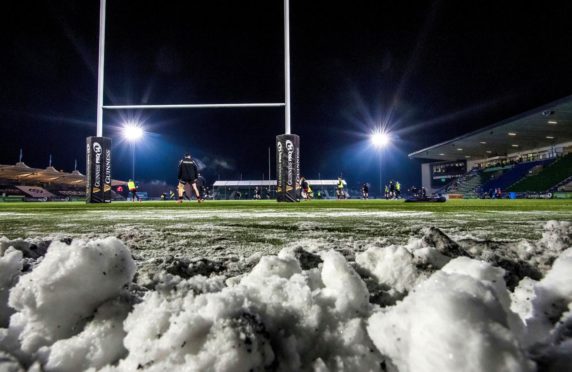Sitting in the upper tier of the West stand at Murrayfield for five and a half hours in wind chill temperatures of minus-six degrees for the Six Nations game against Wales last month concentrated the mind.
Due to Covid-19 restrictions, us journalists have been moved “upstairs” to a new socially-distanced press deck.
We have to be in place at least an hour and a half before kick-off. That’s unusual for a start.
Former Scotland captain David Sole, when he wrote an analysis column for a sister paper, used to arrive in the press box on the final “…to think again” of “Flower of Scotland” and no earlier.
Anyway then we watch the match but still can’t leave our seats until post-match press conferences are done.
There is no indoor heated facility for us because in all the vast expanses of an empty Murrayfield – including a hospitality suite as wide as the West Stand is – there is apparently no suitably ventilated room.
No reason to stay in winter other than entrenched tradition
But rightly, you’re not interested in the trials of people who get into Six Nations games for free. What a near-thing with hypothermia at the Wales game sparked in me was that occasional craving for summer rugby.
Not only should the Six Nations be moved from February, in my opinion, it should be moved to May and June in an elongated ring-fenced international window that takes in Lions tours, Rugby Championship games and summer internationals.
The worldwide season would sit so much better and we’d have less chance of these conflicts between country and club that continually plague the game.
They didn’t take the chance to do that this year, and I get that moving the elite end of the game to the summer has its difficulties. But there’s absolutely no excuse, other than entrenched tradition, not to move the club game.
A trial run they should stick with
It seems this year we’re going to get summer club rugby. After more than a year of the club game being shut down completely because of the pandemic, Scottish Rugby chief executive Mark Dodson said they’ll get the grassroots going immediately it is safe to do so.
Murrayfield (the organisation) are understandably worried about participation levels after such a long hiatus. So pending any other rogue variants or spikes, if we have smooth progression towards some semblance of normal society again in June, it doesn’t make any sense to wait until September to get going again.
Dodson added that if the clubs wanted to stick to summer permanently, that was okay by him. Knowing he doesn’t have the greatest of relationships with the clubs, the combative chief executive is, in his own words, going to be “light-touch”. But his preference is clear.
“The clubs decide when they want to play, but for me, summer rugby in a country like Scotland has to have some merit,” he told the Sunday papers. “If you think about what we face in December, January and February, it’s not the easiest game to continue through.
“We’ve gone through this enormous shock, which has allowed us to look at how the game is played, when the game is played. We’ll support (clubs) in the timeframes they want to play the game.
“If playing between August and April works or if you want to play through the summer, I have no problem with that.
“The more chance you’ve got of kids playing the game in decent conditions, being able to enjoy throwing a ball about, being able to train in the light and good weather with pitches in good shape. That’s something we should perhaps consider.”
The risk is worth taking
It’s not without its pitfalls. Rugby has just soccer as a winter rival right now, and there’s never been any great crossover between the sports.
Moving into a summer would present a traditional crossover clash with cricket, which actually has greater numbers playing in Scotland. Golf and holidays also infringe into the summer.
Rugby League moved its elite game to the summer, but has it been a success? The game has not really moved much beyond its traditional strongholds. It may be just anecdotal, but I detect less attention to the code since it switched.
Schools rugby is also a complication, but I don’t see any reason for moving the competitive element of that sector. Keep the current “window” aiming towards finals played in early December. Exams quite rightly take precedence after that.
We don’t really play in winter anyway
League club rugby is supposed to be wound up by Mid-March most seasons. Then we usually play cups and sevens until summer sports take over.
But in reality, play goes well into May because of the unplayable pitches in December, January and February. Rugby is more playing-surface-dependent than most sports, but this would obviously not be a problem in summer.
The sevens actually fits into a summer structure really well, as a start-up to the new season. What better way to get aerobically ready for a season than the lung-busting shortened game?
Rugby clubs will surely likely to thrive in summer just as much as they do in winter. Watching at Mayfield or Duffus Park or Inchmacoble in shirt sleeves with a beer in hand has a clear appeal.
And the rugby will be better, almost guaranteed. We should try it this summer and stick with it.


